Always wondered, how a Scarlet and expensive cineglass holds up against a BMC and pretty affordable lenses?
Is the difference – that is almost as huge as the price for a new car – really that big?
Felix Patzke of Heimspiel and I where also curious, so we did a little shootout. Here comes part one.
The setup was pretty simple.
We wanted a realworldish scenario, so we used mixed daylight and tungsten, a high dynamic range with dark and light materials, for the indoor shot
and a scene with high detail for the outdoor shot. We did not light or shot for the chart in particular, but just placed it in the middle of the scene for reference and as a focus point.
We had the lovely set of Zeiss SuperSpeeds from Felix and I threw in the Samyang glass. On top of that – and just for shits and giggles – we had some more exotic lenses like vintage Angenieux and Kino Precision zooms. The Super Speeds ranged for 18, 25, 35, 50 and 80 millimeters and the Samyang where the 24, 35 and 85 millimeter.
All was shot @ f4
For the first part, we mounted the Super Speeds on both, the Scarlet (@4k) and the BMC (@2.5k).
On the left is the BMC (original size) and on the right, the 4k Scarlet, (cropped and scaled down, to match the BMC’s FOV and size)
The Red material was rendered at “premium full” debayering, BMC was imported wit Adobe raw.
In the Adobe raw, I just hit “auto” and did no other fine-tuning or grading there.
Once imported to AE, I matched the BNC material to the Scarlet images (i.e. mostly just turned down the saturation and matched the shadows)
The crops are at 200%. You can doubleclick on the images to see them in full glory.
Sooo…
As expected, the LPF of the Scarlet makes things a bit soft, compared to the “naked” BMC.
But you have to pay the penalty of moire and aliasing, for the detail, the BMC delivers.
UPDATE!
Part 2 is now online: https://frankglencairn.wordpress.com/2013/05/13/blackmagic-cinema-camera-vs-red-scarlet-zeiss-vs-samyang-part-2/
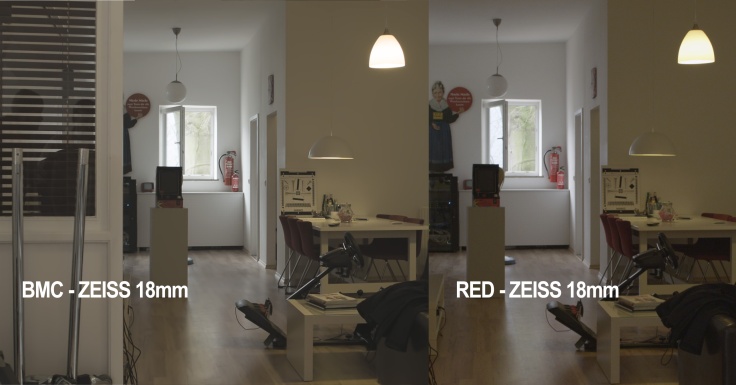
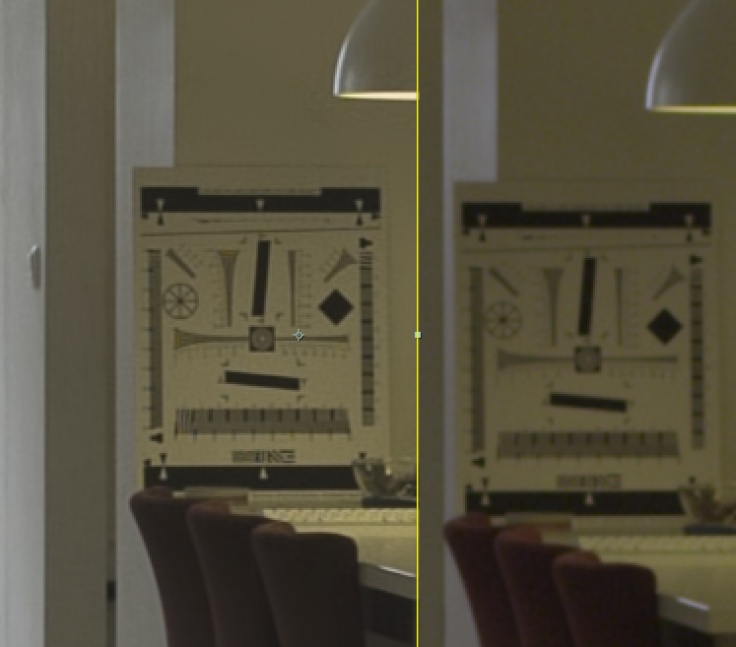

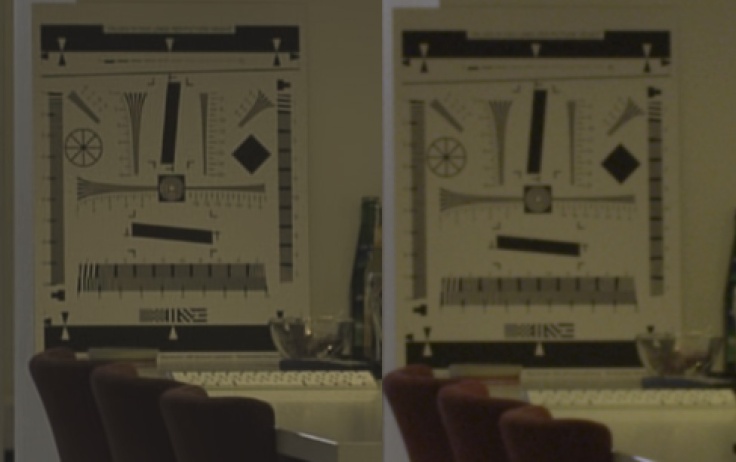
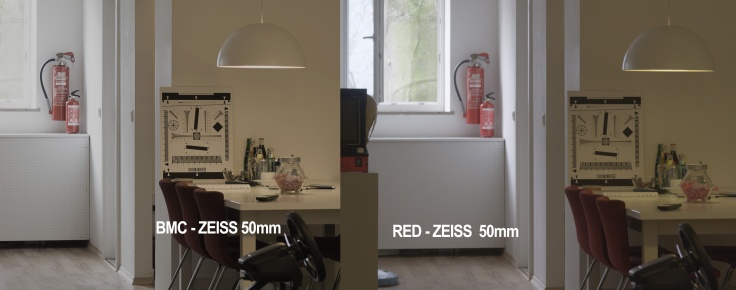
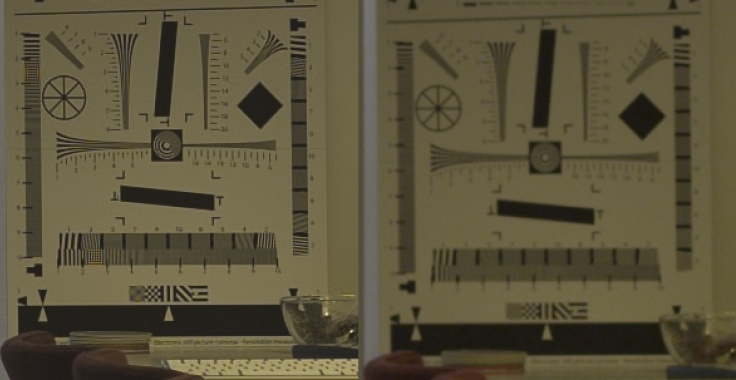

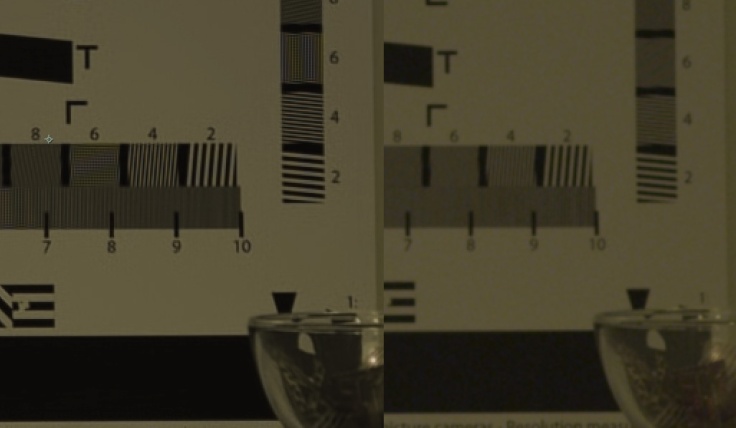

Thank you for this test, however, I don’t believe it is fair. If I am seeing correctly in the pictures, you are comparing old lenses that could be 20-30 years old to newer stills glass. If you want to compare sharpness and resolution fairly, you should use the same lenses to minimize differences.
Old Zeiss Super Speeds may be expensive, but it is because they are fast and soft – which can provide a pleasing look.
The BMCC has a smaller sensor than the Scarlet, so you need to shoot the two cameras with different focal lengths and f-stops to get equivalent images with the same field of view and same depth of field. For example, a 50mm lens at f4 on the BMCC would be equivalent to a 82mm lens at f6.5.
Understood, but then it is impossible to make objective observations about things like the OLPF when the glass is so wildly different. Even if the BMCC would be tighter on the same lens, it would still make for a better comparison than modern stills glass vs vintage cine glass.
It has nothing to do with being fair. It has more to do with cost. Basically for the difference in cost you can get a camera and cine lens that does an incredibly good job.
the RED looks more cinematic, BMC a bit digital.
Michael,
then switch lenses on both cameras and BMC will be the more expensive setup. What’s your argument then?
Wow, Red fanboy there is so blind with fear he can’t even read the article properly.
Switch what lenses all we are seeing so far is both cameras with zeiss superspeeds. It’s when we see the cheaper samyang glass and the exotic vintage on it that will allow us to compare for our personal preference. I personally think the vintage glass and the samyang glass may make the scarlets image (especially the cheaper Samyang) to soft but will pull the sharpness of the BMCC down. We’ll see. The question is though. Can you get an image from a more budget setup that you would be happy with.
There isn’t a winner in this, just a personal preference.
You guys are aware that we used only the same Zeiss lenses on both cameras for part 1.
Using the same glass means comparing the cameras in this first round.
Yup.
I’m surprised at the artifacts on the darker areas on the scarlett. Yet the detail coming in from the window is far better on the 18mm shot on the scarlett.
Back focus or lens mount issue on the Scarlet.
Unnaturally muted chroma on BM. Adobe RAW can fix it.
Frank, I assume that the focus was on the chart and you get the same FOV by shooting at different distances. Pl correct me if I am wrong.
No, wanted to keep the same distance, so I get the same DOF. I cropped the Scarlet 4k files to the same FOV as the BMC
If you cropped the scarlet to match the BMC thats a pretty big crop and would explain the softness. That’s should be made very clear in your post, if your are not utilizing the full size to make the comparison.
To get same FOV you would have to start with identical sensor size and aspect ratio.
i love cheerios….
Why the crop? did you want to compare it to scarlet at 3k? why not have the chart fill up the same portion of both camera’s sensor and then do a 1:1 comparison as I doubt anyone would crop scarlet from 4k to 2.5k in post unless they had messed up. Especially when they could have shot at that resultion and gained compression quiality frame rates and HDRx, at the BMC frame size and resoltion a scarlet is a whole other camera and if you wanted to test that you chould have cropped in camera and not in post as the compression is better and improves the quality. Wheather you shoot old 1/3″ CCD an iphone 16mm 35mm it all projects or displays at the same size, so you compare the full sensor that’s how every resoltion test I have ever seen is done with a chart lined up to the frame guides for each camera. I also believe from your description elsewhere you straight cropped the sensor I see you have now ammended your article toi include that but also mentions scaling which if I gathered how you described it correctly that is not what was done and is still misleading. Why not just show the full frame from both cameras as well in the article.
Love your work Frank you are a very talented man but I’m sorry I’ve missed the point of this test as it’s not accurately described for what it is, except for a very small mention of cropping the image, with as I pointed out no adequit explantaion and even if there was, explaining you were testing the same size area on both sensors which in itself can be very misleading(as why hobble one image to meet another?) you didn’t even do it right by croppping in post rather than gaining increased compression quality by dropping the resolution in camera. There is a reason why people test with charts and the scientific method it’s very hard for them to be misconstrued or misleading, also it’s the reason I will not conduct these kind of tests all that matters is what we each personally think and what is acceptable to us and the best way to find that out is through our own testing not watching others.
have a nice day! and keep up the fabulous work!
Seems like a back focus issue on the Scarlet, our Epic is always sharp.
Thanks for shring this article with us.